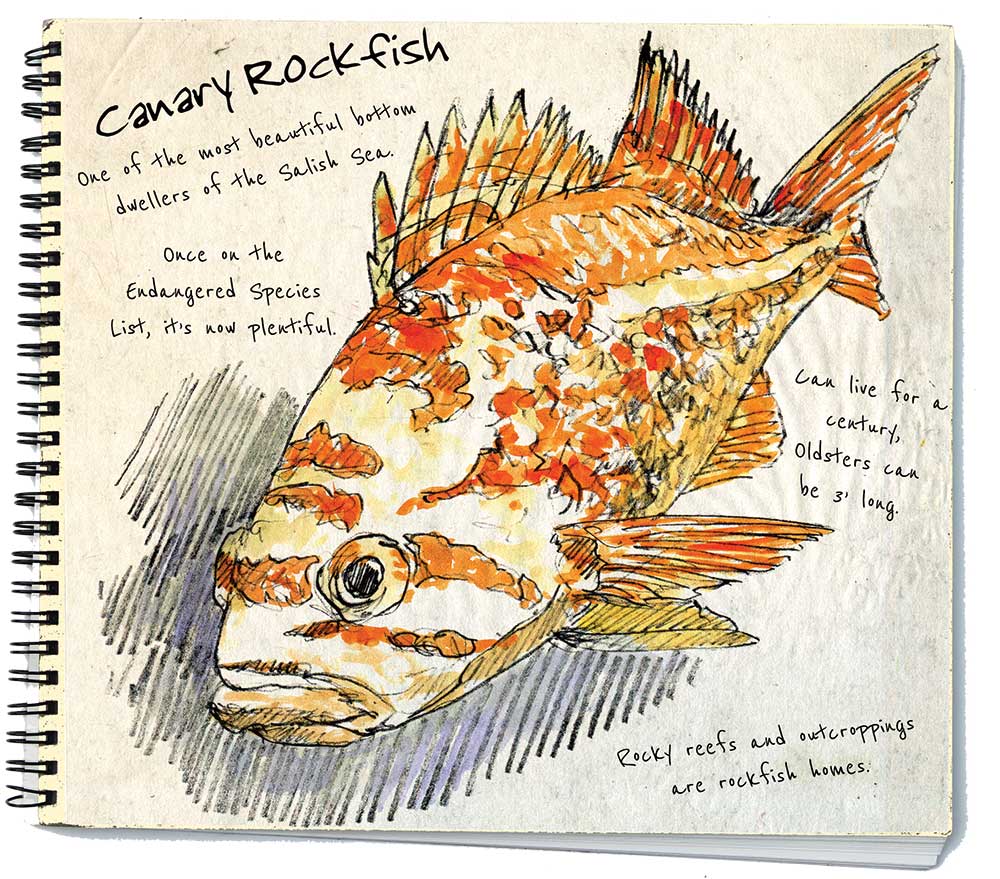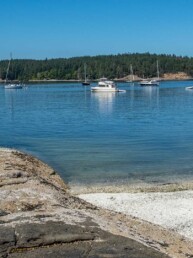Just as their name suggests, these guys prefer to live around rocks. Twenty-eight species of rockfish live in the Salish Sea, from 3-inch tide pool dwellers to 3-foot lunkers that live in deeper water and weigh in at 25 pounds. Most are slow-growing and long-lived; some live to be more than a century old. They have a completely different lifestyle from live-fast and die-young salmon. Foraging for other fish, they may swim only a few hundred miles in their lifetime. Rockfish tend to hang out together in groups around rock pinnacles or cliffs, places with lots of tidal current (which helps bring meals to them and not the other way around). Canary rockfish usually have three stripes angling down and backwards on the head, the middle one often runs across the eye. This is a very bright and distinctive fish.
 The conservation of this fish is a real success story; and one that shows how science and government can work together to make our lives, and the lives of rockfish, better. After discovering how good rockfish tastes, a definite over-exploitation of these delectable fish began in the 1800s. This continued until canary rockfish were declared overfished in 2000, when it was discovered that rockfish populations had declined 70% since the 1960s. Fish and Wildlife submitted a petition to have 14 rockfish species listed under the Endangered Species Act (in the end, not all of these were listed). Scientific studies of them began, and complemented old-fashion surveys asking fishermen, “Where are you catching canary rockfish?” Based on findings from each of those avenues, fishing rules were changed and different gear was introduced. Suddenly, in half the time originally forecast, we have plenty of rockfish.
The conservation of this fish is a real success story; and one that shows how science and government can work together to make our lives, and the lives of rockfish, better. After discovering how good rockfish tastes, a definite over-exploitation of these delectable fish began in the 1800s. This continued until canary rockfish were declared overfished in 2000, when it was discovered that rockfish populations had declined 70% since the 1960s. Fish and Wildlife submitted a petition to have 14 rockfish species listed under the Endangered Species Act (in the end, not all of these were listed). Scientific studies of them began, and complemented old-fashion surveys asking fishermen, “Where are you catching canary rockfish?” Based on findings from each of those avenues, fishing rules were changed and different gear was introduced. Suddenly, in half the time originally forecast, we have plenty of rockfish.
Larry Eifert
Larry Eifert paints and writes about the Pacific Northwest from Port Townsend. His large-scale murals can be seen in many national parks across America, and at larryeifert.com.






